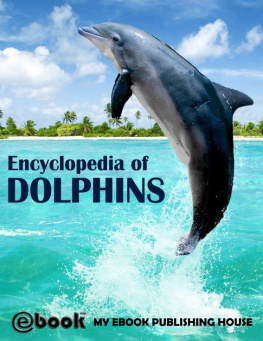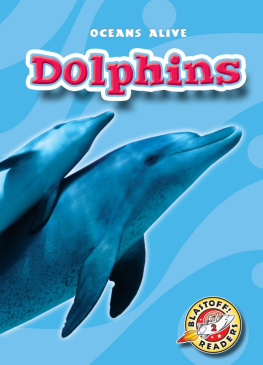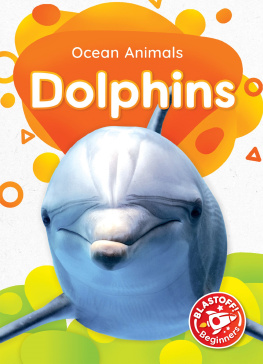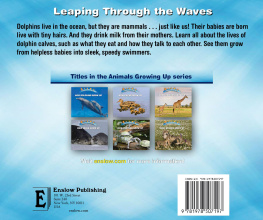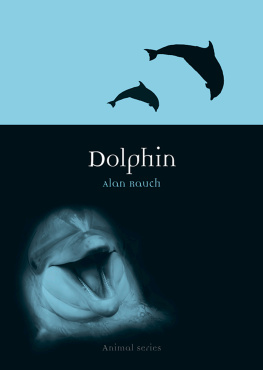Encyclopedia of Dolphins
~~**~~
Published by My Ebook Publishing House atSmashwords
Copyright 2013 My Ebook Publishing House
Smashwords Edition, License Notes
This ebook is licensed for your personal enjoymentonly. This ebook may not be re-sold or given away to other people.If you would like to share this book with another person, pleasepurchase an additional copy for each recipient. If youre readingthis book and did not purchase it, or it was not purchased for youruse only, then please return to Smashwords.com and purchase yourown copy. Thank you for respecting the hard work of thisauthor.
~~**~~
~~**~~
Other Titles from My EbookPublishing House:
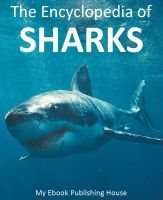


~~**~~
Table of Contents
I. What are dolphins?
How do dolphins look like?
II. The Dolphin Senses
The smell
The taste
Touching
The sight
The hearing
III. What kind of sound do thedolphins produce?
Sounds which can also be heard by thehuman
Sound which cannot be heard by the humanear
The vocal chords of the dolphins
IV. What use have the dolphinsultrasounds?
Is the dolphins language alanguage?
V. Undefeated swimmers anddivers
VI. How long do dolphinslive?
VII. What and how much the dolphinseat?
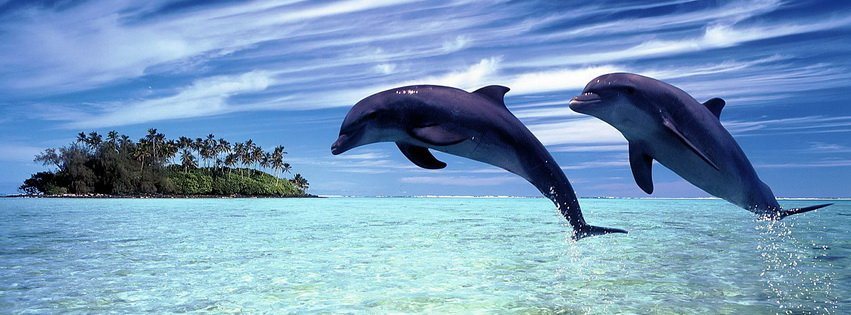
I. What are dolphins?
Known from the most ancient times, the dolphinswere thought to be, for a long time, fish. Through the studies andobservations made though, it was reached the conclusion that eventhough they resemble the fish, regarding the shape of the body,they are more related to the terrestrial mammals through more thanone characteristic.
First of all, the dolphins, as well as all theother mammals, give birth to the cubs which they feed with milk,just like the cat, dog, sheep do, from all the animals that the mandomesticated, or the lions, the rabbits, the monkeys and othersamongst the most wild. Also, as all the terrestrial mammals, thedolphins breathe through their lungs and not at all through thegills like the fish do. This way is explained the fact that thedolphins need to surface from time to time to breath theatmospheric air, while the fish take the necessary oxygen for therespiration from the water. Another very important characteristicwhich demonstrates the tight kinship of the dolphins with themammals is that they have their own constant body temperature ofapproximately thirty six degrees Celsius, unlike other vertebrateslike the fish, frogs, lizards and others of which temperaturemodifies along with the one of the place where they are at thetime. Beside these typical characteristics, dolphins also haveother kinship points with the mammals, but since the ones mentionedare the main ones, we will stop here.
Naturally, we ask ourselves: how is it thatsome animals that live all their life in the water, where they eat,give birth and raise the cubs, are more related to the ones thatlive their live on land, than to the ones they look alike and livewith, in the same environment? The history of this fact is slightlymore complicated. In the beginning, the life appeared in water inentirely different weather conditions than the ones we, humans,know today on Earth. It developed, evolved, following a normalpath, from simple to complex, from the unicellular beings-with thebody formed of one cell-to the multicellular. But, of course, themulticellular cells evolved and in thousands and billions of yearsit reached, through complex changes of all sorts that produced onEarth, for their world to diversify as well. This way formed theinvertebrates (the sponges, the coelenterates, the worms, themollusks, the crustaceans, the insects and others), then, muchlater, the fish, from which a part, at a certain moment, had to getused to the lack of water and to pass to the life on land becauseof the draughts that fell on many areas of the Earth.
This way, in the beginning, the gillrespiration was doubled by the pulmonary one, and the flippersstarted to modify for the locomotion on land. Some evolvedfurthermore, in the sense of a terrestrial life, with pulmonarybreathing, giving birth to the amphibians (frogs), from which thenformed the reptiles (the lizards), and from these the birds and themammals. But the times never stopped; new conditions of lifesettled on Earth. In the situation created, some terrestrialmammals, already adapted to the life on land, had to return to theaquatic life.
To survive though, they suffered a newadjustment, in other words a readjustment to the environment theycame from, remaining still at a superior level of evolution fromthe animals which never left the aquatic environment. Since theyhad to swim in the water, their legs turned into shovels, the tailwidened a lot, forming some sort of paddle through which they flipand move forward, the hair disappeared, and the nostrils migratedabove the head, easing this way the breathing. In time, the backlegs, little used, reduced and eventually disappeared completely onthe outside, in the muscles, somewhere in the last half of thebody, in the part beneath, still remaining some bones. Of course,all the transformations connected both to the evolution to mammalsas well as the readjustment of some of them to the aquatic life didnot produced as simple as it may seem.
Thousands and billions of years were necessaryfor the characteristics we talked about to settle down, both indolphins, as well as in other related or unrelatedanimals.
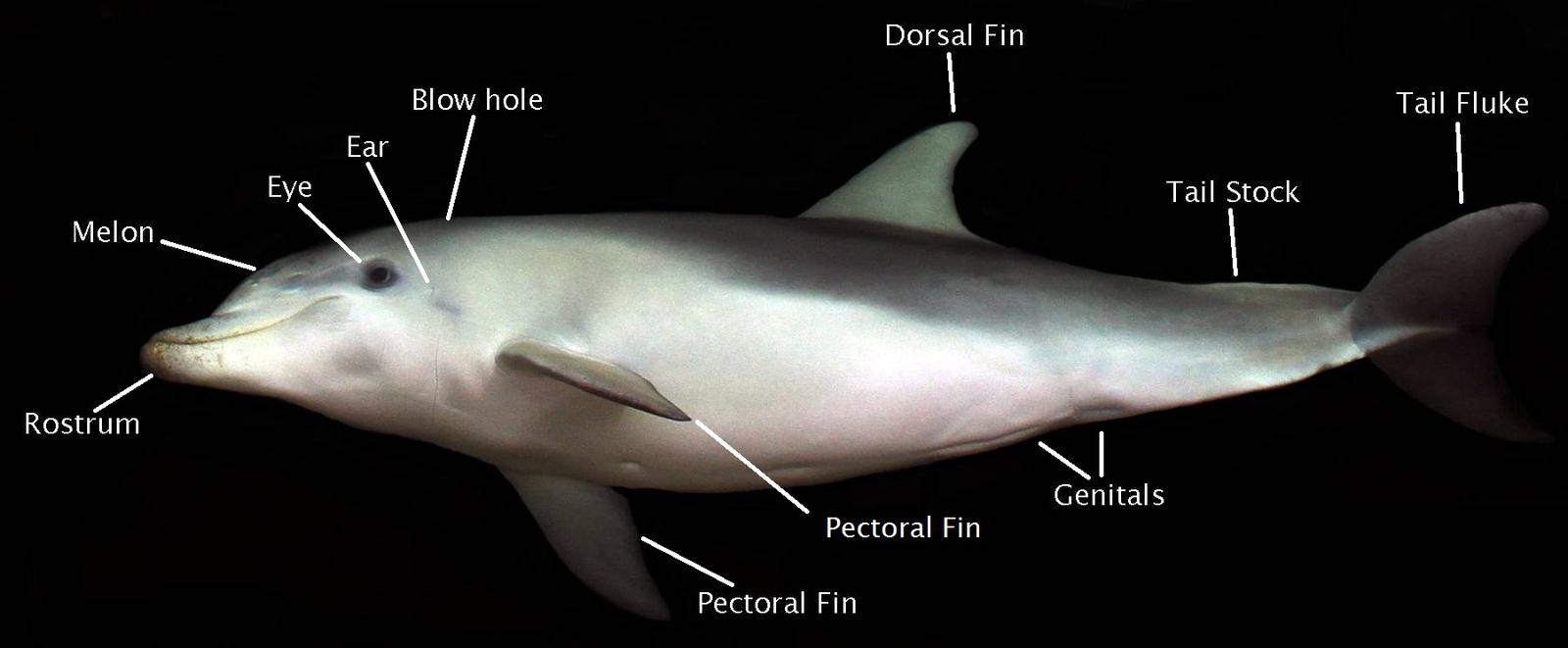
How do dolphins looklike?
Of course many of us saw a dolphin, if notalive, directly in nature, at least in a museum, in a movie or inpictures from various books. Still, if anyone should make adescription, even very summary, in which to show some essentialcharacteristics, this would be, mostly, incomplete, inconclusiveand here and there wrong, because of not knowing what it is andwhat might be or not characteristic for an animal.
Living in an aquatic environment, the dolphinsbody gained a hydrodynamic shape which is similar to the one of thefishes, even though, as we already said, they are not related evenby far. This phenomenon of a much accentuated likeness between twounrelated animals-called a convergence phenomenon-is often found inthe animal world and is only due to the environment, whichdetermined an identical evolution. As dimensions, the dolphinsbody is long, measuring from one meter and a half for the smallspecies, up to ten-thirteen meters for the big ones and even morethan twenty meters for one of their closest relatives, the giantcachalot.
Between the head and torso, the dolphins do nothave a neck. Dorsal, they can have a flipper, but it is nothingelse than a crease of the skin, highly developed. The head, largefor some species, and smaller for others, is generally round, alittle asymmetrical, anterior prolonged with some sort of a beak,of various lengths for various species, which carries the teeth.There are though species of dolphins to which this extension doesnot appear, the head seeming to be blunted. The eyes, setlaterally, are fairly small, and the ears are lacking thepavilions. The nostrils are found above the head and lost the senseof smell, serving only for breathing. For the dolphins, they openoutside through a single orifice, which carries the name ofblowhole, unlike the whales which have two blowholes.
Next page
